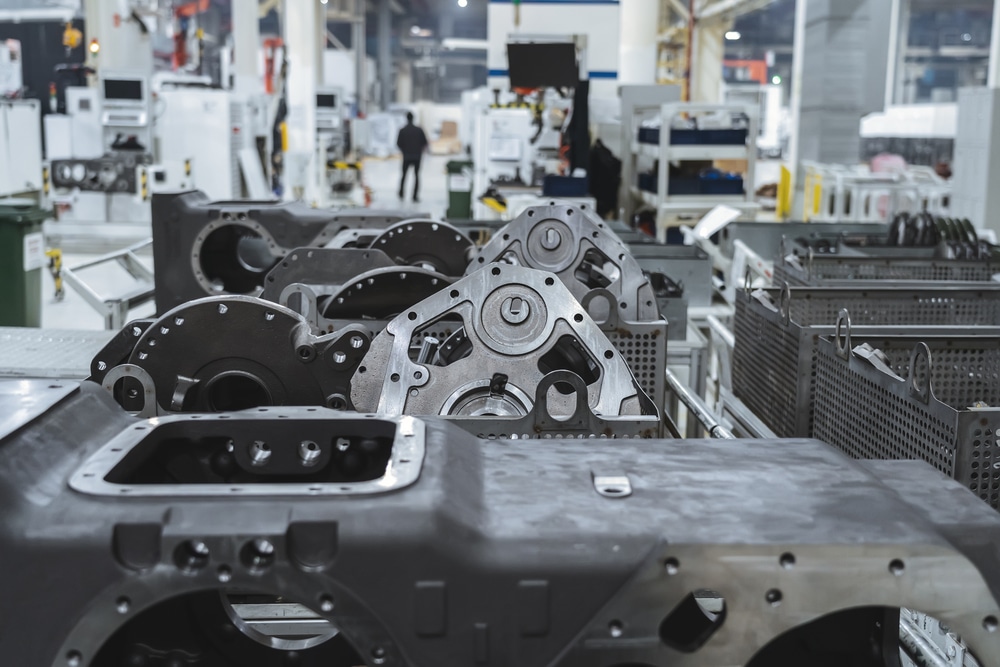
Manufacturers and businesses must understand the future of OEM transmissions in the automotive industry. As the number of electric cars grows, how we think about transmissions and manufacturing will change tremendously. Those in the industry will need to learn as much as possible about how these developments affect them and how they can stay afloat during such transitions.
Manufacturers and anyone involved in the industry must stay caught up in today’s automotive trends. They can become more successful by looking back at the past, seeing where OEM transmissions are now, and determining how they can adjust their business efforts and strategies to fight back against looming challenges. Doing so can award them with new opportunities to grow.
The Evolution of OEM Transmissions
The OEM transmission comes directly from manufacturers that have grown into many trusted brands, including Toyota, Ford, Subaru, Honda, Kia, Nissan, and many others. We rarely see manual transmissions in today’s vehicles, but it’s uncertain whether they’ll go away completely as advancements in the OEM automatic transmission progress.
Ultimately, consumer interest and market demands will have a major say in how OEM transmissions improve in the coming years. The hydraulic planetary automatic transmission is extremely popular today, but that could change as electric drivetrains address the desire for multiple speeds. Dual-clutch transmissions are especially helpful for quick transitions between gears and improved vehicle performance.
The Shift Toward Electric Vehicles and Its Impact on OEM Transmissions
The electric vehicle revolution is improving the automotive industry and bringing new demands. Drivers are looking to have an enjoyable driving experience and lasting durability from their vehicles. An OEM transmission will need to meet newer machining requirements and address any current shortcomings so that manufacturers can appeal to a larger base of customers.
Current Trends in OEM Transmissions
Before looking toward the future of OEM transmissions in the automotive industry, it’s good to touch upon today’s OEM transmission trends. Some of the most impactful that we’ve noticed include electrification strategies, hybrid powertrains, and the integration of AI and IoT.
Electrification Strategies
Manufacturers are looking for greener ways to power and produce their vehicles. Hybrid transmissions are a current trend and one that we often see with electric variable transmissions.
Hybrid Powertrains
Hybrid powertrains can help promote the use of clean energy sources with the use of two power units. They also come with more fuel efficiency and driving flexibility. As advancements emerge, we look forward to seeing how these powertrains strengthen the driving experience.
The Role of AI in Transmission Development
Artificial intelligence and the Internet of Things could improve transmissions for future vehicles and strengthen manufacturing. AI and IoT communication and improvements could completely transform the automotive industry’s operations. This could affect everything; in the future, vehicles could have a combination of human and automatically made parts, and the technology could affect how engines support the running of vehicles.
Vehicles could predict harmful situations before they happen and adjust how they perform based on environmental factors, smart technology, and access to the internet. Drivers can delegate some of the stress the driving experience brings to their vehicles, using AI and IoT to their benefit. However, we may have to wait to see such strong changes, though they are very possible in the future.
How OEM Transmissions Contribute to Vehicle Efficiency
The various types of OEM transmissions use their unique characteristics to make vehicles today (and in the future) even more efficient. Whether through a continuous variable, multi-speed, or dual-clutch, these transmissions are helping vehicles run better than ever before.
Multi-Speed Transmissions
Multi-speed transmissions are typically durable and can shift between gears to help the engine’s operation, strengthening efficiency. While most electric vehicles utilize single-speed transmissions for the motor, producing them with multi-speed transmissions could improve their performance and make them even better. It’s possible we’ll see more EVs with these transmissions as time goes on.
The Rise of CVTs and DCTs
CVTs can use less fuel while running the vehicle at its best RPM range, maximum power band, and the best possible performance.
These transmission types are preferable for performance driving and have excellent fuel economy and quick shifting.
Predictions for the Future: Fully Autonomous Vehicles and Transmission Innovations
With the improvements to transmissions and other car components, the future will likely contain fully autonomous vehicles. Several steps will have to happen before that, including improving the safety of vehicles and adding more advanced technologies. Transmissions will need to become more sophisticated and meet new demands to power advanced vehicles.
Additional Read: Remanufacturing: Paving The Way For A Greener Future In The Automotive Industry
Challenges and Opportunities in OEM Transmission Development
Manufacturers have to quickly adjust their strategies and become flexible to changes in the industry. The increase in electric vehicle sales in the past few years and the setbacks of a global pandemic have challenged and benefited manufacturers, allowing them to cater to more sales. However, automotive industry members are also dealing with pressure from suppliers and may struggle to access the materials and goods necessary to produce the vehicles people want.
That said, manufacturers can take advantage of growing demands and benefit financially from the desire for more advanced vehicles. They may contribute to price changes and produce the best possible transmissions the world has ever seen. Consumer demands can light the fire for OEM transmission changes, but manufacturers and suppliers may use their positions in the industry to their benefit and further their success.
Dynamic Manufacturing: Support for OEMs and Industry Partners
We’ve covered the future of OEM transmissions in the automotive industry, along with current trends and predictions for the future. Dynamic Manufacturing Team is an experienced, family-owned, operated supplier of remanufactured and new automotive components. We aim to provide our clients with extensive information, produce high-quality products, and more. We also supply electrification, machining, motorsports, and remanufacturing services, so contact us online or at (708) 343-8753.
Learn more about trends in the automotive industry.
FAQs
Is CVT transmission the future?
CVT transmissions are essential to the automotive industry’s future, as they are simple, reliable, and adaptable.
What is the best transmission technology?
The best transmission technology is CVT, which supplies a smooth driving experience, but some may believe the best is DCT or AMT.
Learn more about this technology, the future of OEM transmissions in the automotive industry, and more by reaching out.



